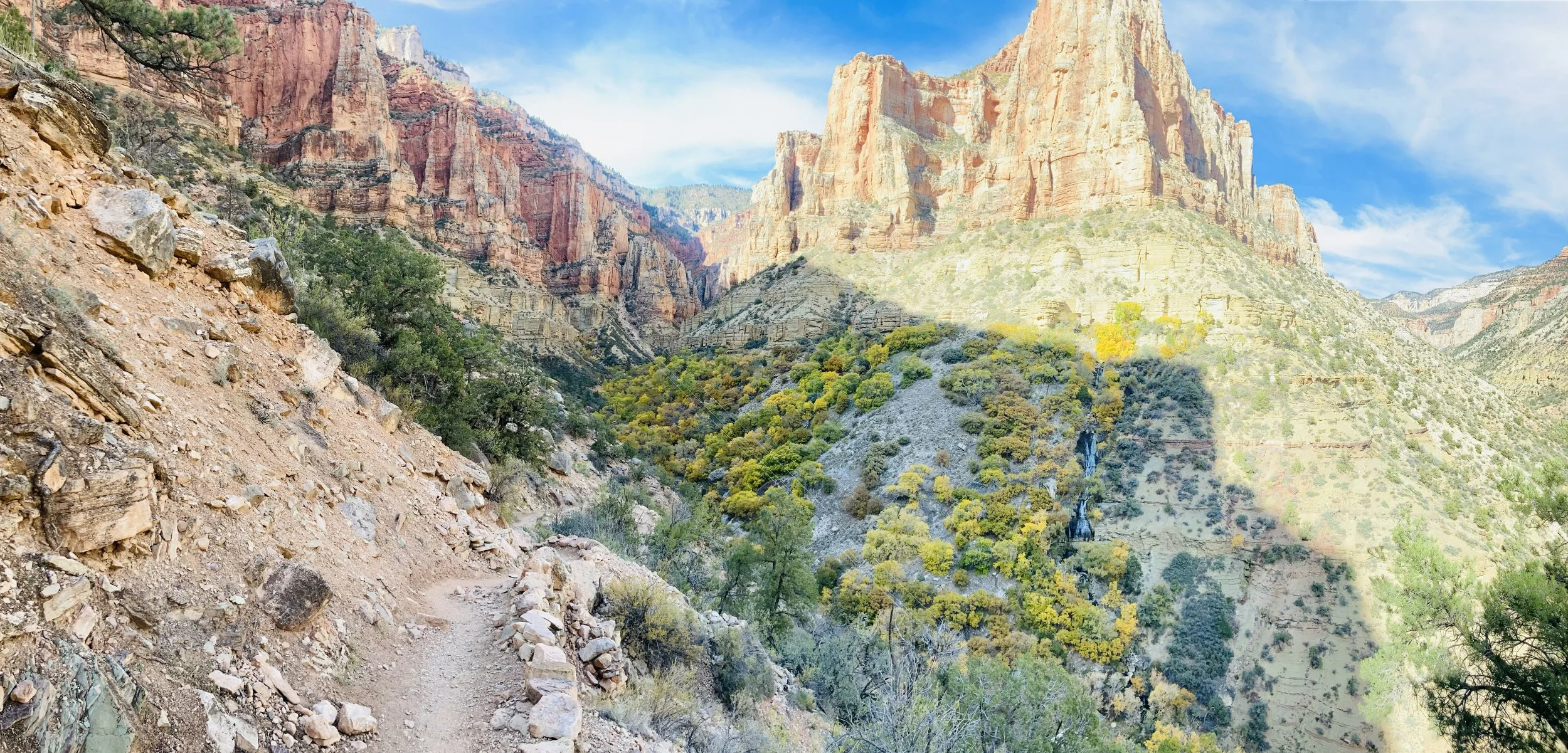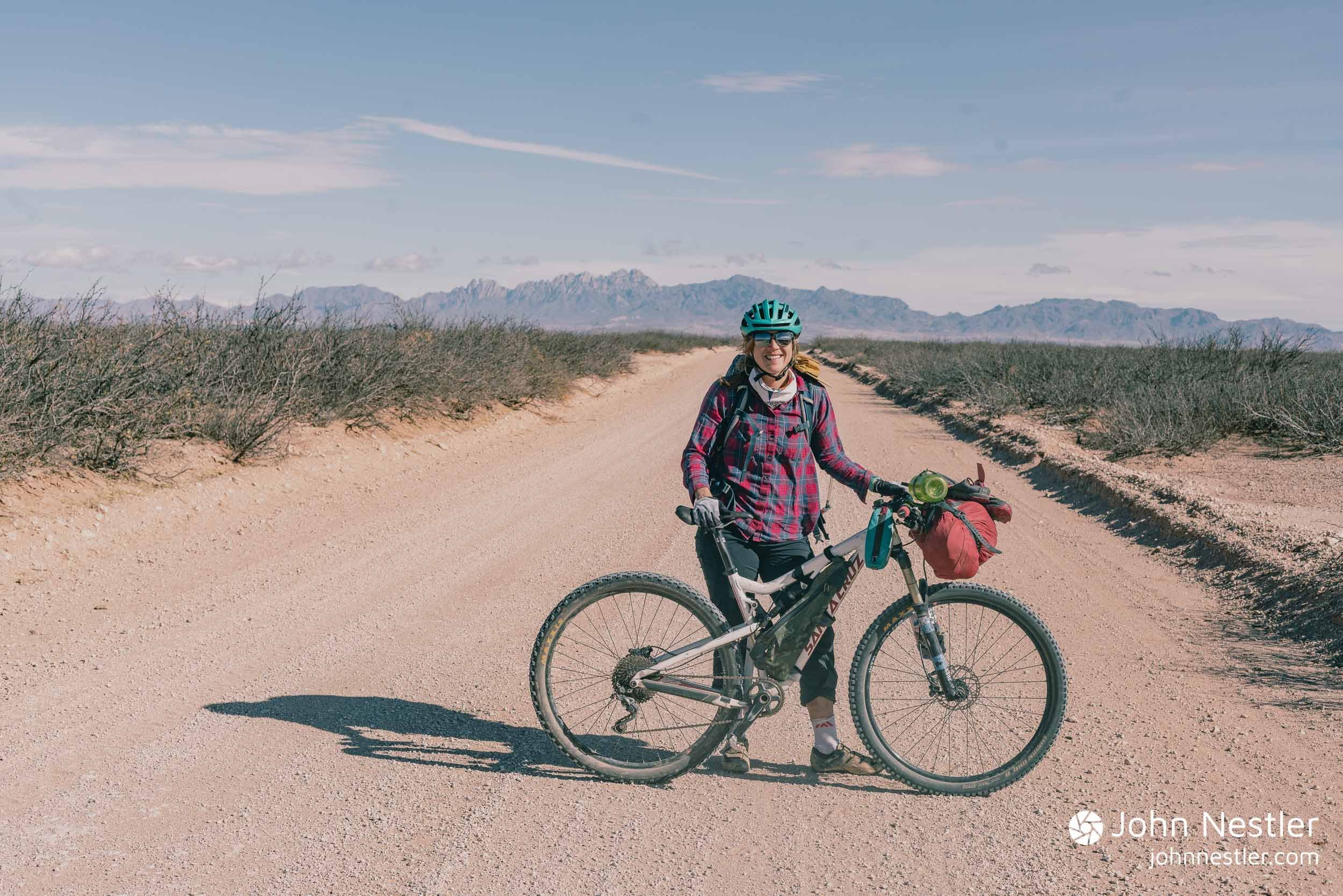Welcome
This site encompasses a wide range of interests - from photography to multi-day river trips. What ties it all together is the outdoors. Throughout the years I've had a lot of fantastic experiences in the backcountry, and I want to share that stoke & knowledge through photography and useful articles. Enjoy!
Note: please know that some links on this site are affiliate links through Amazon and other online retailers. This means that I receive a small commission for each sale through the link. This helps support the site and pay for hosting costs.
The r2r2r has been on my radar for a while now since it's such a classic route, but I never lived closed enough to make it a weekend trip. I briefly contemplated trying it in June when I moved out to Utah but the weather window wasn't quite right (and my legs were shot from the White Rim). I threw out the idea to some friends though and settled on the 1st weekend in November to give it a go, and it really worked out beautifully.
Ultimately just James and I made it down to the Grand Canyon for the run and the area had just received its first snow of the season a few days prior. Temps were looking to be in the low 20's at night rising to 60's down at Phantom Ranch which made planning and stowing layers a bit tricky. My greatest stressor? Whether to start out in shorts or wear light pants overtop.
I'm fortunate enough to have been down the Grand 1.5 times previously. Once on a commercial trip from Phantom to Diamond and another full trip as a solo kayaker back in 2014. Both those experiences were magical and I've been scheming a way to return for years now. The schedule in graduate school isn't conducive to taking a month off on a whim, but I caught a lucky break during my 4th year of medical school.
All year I'd set aside January as a planned vacation month. I didn't get a permit in the main lottery and was also denied in the follow up lottery. I was crushed as I knew this would likely be my only totally free month until after 5-6 years of residency. The day after receiving the lottery info I got a call from an unknown Flagstaff number. Thankfully I answered as it was a river ranger saying I was next on the list for a late January launch - I was ecstatic!
The White Rim has been on my radar as an iconic loop for quite a while now, and it was one of the first big adventures on my list to do after moving to Utah. Unfortunately I moved at the beginning of summer and temperatures were pretty toasty in the Moab area. Luckily I saw a one-day weather window of lows in the 60's and a high of 80 so I decided to go for it.
I started before sunrise at the bottom of the Mineral Bottom switchbacks in order to beat the heat on the strenuous climb up towards State Route 313. The switchbacks are definitely pretty steep and gnarly to drive down but the Prius made it down without issue as the road was in pretty good condition at the time. I started at 3:30 AM, and the climb up the switchbacks actually flew by in just 30 minutes. From there I hit SR 313 in time for a beautiful sunrise and then began the fun of descending the Schafer switchbacks while continually being in awe of the landscape around me.
With a hut trip planned in Colorado for the holidays Amelia and I set about brainstorming another adventure to tack onto what seems to be our annual road trip out West. Last winter we did the Lower Canyons of the Rio Grande, and would have loved to return, but there's only been a trickle of water coming down that section lately. Bikepacking came to the top of the list for warm(er) weather activities, and we kept hearing about the Monumental Loop in Las Cruces from two local riders who had completed it earlier in the year. It seemed like the perfect activity to welcome the winter solstice.
Dolly Sods holds a special place in my heart as I was brought there a few times as a Boy Scout. At the time I remember being fixated on the unexploded ordinance signage & the otherworldly landscape of this area. Later on I began to realize how special this corner of West Virginia was with Canaan Valley, Dolly Sods, the Blackwater River, and White Grass cross country skiing all nearby. Davis & the surrounding areas really are one gem of an adventure town.
The Escalante Route is reportedly one of the more difficult, non-technical routes in the Grand Canyon, but it offers a sampling platter for all the Canyon has to offer. It gives you a nice feel for the topography of hiking both near the river as well as through the exposed rock & side canyons that feed into it. There are significant sections of exposure as well as the rock wall at Papago, so be prepared for those sections to be the crux of the trip. Typically hikers will exit this route via New Hance Trail, but exiting via Tonto & Grandview gave us an additional night of camping and let us take in the landscape around Horseshoe Mesa.
Packrafting has always interested me, but it wasn’t until I won an AIRE BAKraft at Gauley Fest last year that I seriously considered putting a lightweight river trip together. Yes, I know a BAKraft isn’t a true packraft but the portable size and lighter weight lend it to the same purpose. I had previously used IKs on the Tatshenshini and Nahanni, so I knew how much gear they could haul, and I was excited to put my new craft to use on a remote stretch of river.
With a few ideas in mind I reached out to Thor at Alpacka Raft, and he suggested this stretch. The Middle Fork of the Flathead had never been on my radar before, but a quick Google revealed a gem of a river that actually inspired the Wild and Scenic Rivers Act back in 1968.
In January 2016 I released an online survey with the intent of determining whether shoulder injury rates differed among whitewater kayakers who used bent shaft or straight shaft paddles. Shoulder injuries are incredibly prevalent with whitewater paddlers, and I was personally interested in the data since I sustained multiple subluxations while kayaking ultimately resulting in surgery in 2012.
Many kayakers must have had a similar level of interest in the survey since there were over 2,700 responses. I fully expected less than 100 responses, but the survey truly went viral. Thanks for providing that data and rallying to spread the survey around! Unfortunately there are many confounding factors present, and I never had the time or technical skill to do justice to the sheer amount of data collected in the survey. I'd like to say I could put aside time for a project like this, but I'll be starting medical school next week and I don't think it's going to happen. Thus I'm making the raw data public so that people can sift through it if they're interested.
I first arrived in Southern Oregon as a raft guide back in the summer of 2016, and I kept hearing about this river called the Illinois. It seemed that everyone agreed that it was their favorite multi-day river trip in the area, but I was never in the area early enough to catch the spring flows. This year I had a chance to spend three days on the Illinois from Miami Bar to Oak Flat, and I finally understand why this section of river is so special.
Studying for Step 1 is often a source of anxiety for medical students since it's seen as such a monumental task and high stakes exam. The purpose of this article is to distill some of my experience with the hope that it can help others be less stressed & better prepared for this exam in the future.
This is truly the quintessential question of medical school, and if you’re like me you’re probably curious how all those hours of studying stack up. Lots of rumors & approximations float around in online forums, but I wanted to take a more quantitative approach to the question. The solution? I made myself the test subject and tracked my studying as an M1 and M2.
I first started dislocating my shoulder as teenager while whitewater kayaking, and this set me off on a path which has made me very familiar with the medical management of labrum tears in the shoulder. Shoulder injuries aren’t uncommon in whitewater kayaking since the force of water & precarious positioning of the arms can easily lead to injury if you’re not careful. It’s not just paddlers though, I have a handful of friends who are runners, mountain bikers, and soccer players who have needed surgery for shoulder instability. It’s a common problem that really isn’t talked about enough. Hopefully you don’t need this article since you’ve been practicing good technique & keep your arms in the “safety box” to prevent injury. If you’ve had an injury or recurrent shoulder instability in the past, then this might be a good resource for you.
A few years ago I sustained a significant concussion while mountain biking, then just a week later had surgery for a pre-existing labral tear in my shoulder. A couple weeks after I was back in college, and felt just a bit different. I never had insomnia previously, but suddenly I found myself anxious and confused as I struggled to fall asleep each night. I would get in bed and keep checking the clock each hour as I tried to calm my mind, but before I knew it five hours would pass and I’d still be awake. Sleep was even harder then as I would start to fret about the next day. Thus began a vicious cycle, and I soon broke down and asked for a prescription of Ambien (zolpidem) sleeping pills.
As I got up to leave the examination room, the doctor's assistant mentioned that if I wanted to facilitate the healing process I could consider taking a calcium supplement or multi-vitamin. Historically the research has been inconclusive on whether vitamin supplementation is effective or possibly even harmful, so I decided to look into this statement a bit further.
The new MCAT (2015 MCAT) is by far the most intensive and expansive test of the undergraduate career. The good news is that a few months of focused, intense study will give you the basic tools to handle even the most complicated looking questions. I just recently finished the MCAT journey in May 2016, and wanted to write this as an informal guide to help future test takers.
May gave me a little bit of time off from work due to low flows on the Owyhee River as well as rehab time for my dislocated shoulder on the Illinois River earlier in the month. I decided to take this extra time and venture down south for a sightseeing/photography tour of Northern California. Previously I ventured around the Trinity Alps area to paddle on the Cal Salmon and hike the Four Lakes Loop, but that was the extent of my California knowledge.
Once a little-known island situated between Greenland and Europe, Iceland has rapidly become a popular travel destination. In 2000 around 300,000 people visited in Iceland. That more than tripled to nearly 1 million visitors in 2014, and in 2016 almost 1.8 million people visited the island with a population of only 334,000. It’s hard to pinpoint where this sudden surge of interest came from, but some experts point to the eruption of Eyjafjallajökull, which affected air travel across Europe in 2010 and may have put Iceland on people’s travel radar.
So tourism is booming in Iceland. Should you visit? Having visited Iceland in October 2017, I can say that the hype is real. The land of fire and ice is a unique travel destination with landscapes that can only be described as otherworldly. So yes, you should visit. I’d say do it sooner than later since tourism continues to skyrocket, and this will inevitably take a toll on the wild landscapes that draw people to Iceland.
P.S. If you like the site you can subscribe to a newsletter and get the best articles of that month in your inbox!


















My last two trips down the Canyon were 20+ day self support solo kayak trips and I was ready to share the experience with someone else. The only catch was I only had 8 days off of work, so it'd have to be a quick trip. And in the spirit of adventure it made sense to go all the way to Pearce. It wasn't an easy sell - paddle 40 miles per day, for 7 days, in the middle of winter, but a good friend from college agreed to come along and I was stoked for the adventure.